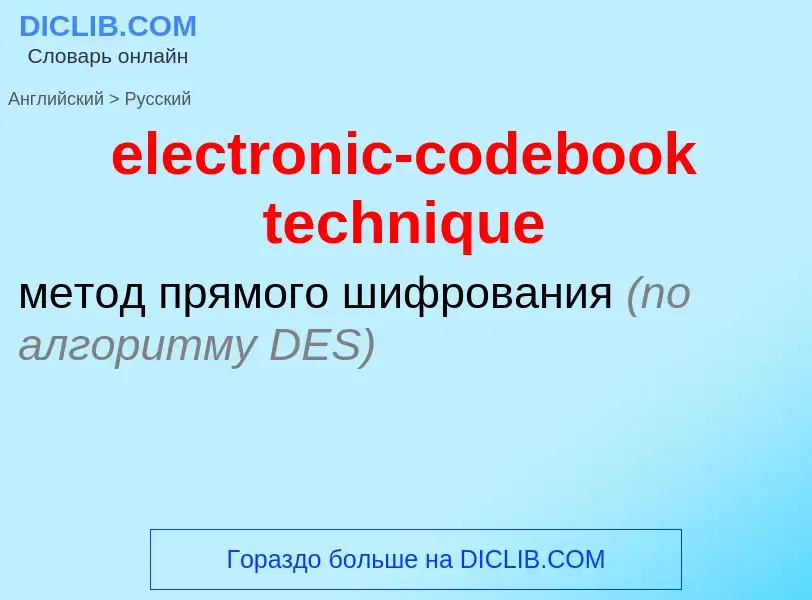Перевод и анализ слов искусственным интеллектом ChatGPT
На этой странице Вы можете получить подробный анализ слова или словосочетания, произведенный с помощью лучшей на сегодняшний день технологии искусственного интеллекта:
- как употребляется слово
- частота употребления
- используется оно чаще в устной или письменной речи
- варианты перевода слова
- примеры употребления (несколько фраз с переводом)
- этимология
electronic-codebook technique - перевод на русский
общая лексика
защита от помех
общая лексика
дискретный компонент
компонент, имеющий три и менее выводов, например транзистор, диод, сопротивление, конденсатор и т.п.
математика
дискретный элемент
Смотрите также
общая лексика
электронный компонент, электронные компоненты, электронные комплектующие
Смотрите также
[i'lektrəfəun]
существительное
общая лексика
электрофон
электрический музыкальный инструмент
телефон для тугоухих
система радиовещания по телефонным проводам
система радиовещания по проводам
['æntidʒæmiŋ]
прилагательное
общая лексика
противопомеховый
радиотехника
помехоустойчивый
существительное
['æntidʒæmiŋ]
общая лексика
защита от помех
радиотехника
устранение помех
Определение
Википедия

Musical technique is the ability of instrumental and vocal musicians to exert optimal control of their instruments or vocal cords in order to produce the precise musical effects they desire. Improving one's technique generally entails practicing exercises that improve one's muscular sensitivity and agility. Technique is independent of musicality. Compositional technique is the ability and knowledge composers use to create music, and may be distinguished from instrumental or performance technique, which in classical music is used to realize compositions, but may also be used in musical improvisation. Extended techniques are distinguished from more simple and more common techniques. Musical technique may also be distinguished from music theory, in that performance is a practical matter, but study of music theory is often used to understand better and to improve techniques. Techniques such as intonation or timbre, articulation, and musical phrasing are nearly universal to all instruments.
To improve their technique, musicians often practice ear training. For example, musical intervals, and fundamental patterns and of notes such as the natural, minor, major, and chromatic scales, minor and major triads, dominant and diminished sevenths, formula patterns and arpeggios. For example, triads and sevenths teach how to play chords with accuracy and speed. Scales teach how to move quickly and gracefully from one note to another (usually by step). Arpeggios teach how to play broken chords over larger intervals. Many of these components of music are found in difficult compositions, for example, a large tuple chromatic scale is a very common element to Classical and Romantic era compositions as part of the end of a phrase.
Tuning is a musical technique which is performed directly before nearly all instruments are used (even unpitched percussion instruments are often tuned), so it is often taught to students at the beginning of study of most instrumentals. Different instruments require varying techniques. For example, string instruments require fingering technique, while bowed string instruments require bow technique. Brass and woodwind instruments require mouthing techniques (correct positioning and shaping of the mouth and proper breathing), while woodwind instruments often require fingering technique, brass instruments often have simpler fingering than woodwinds but require a basic understanding of the harmonic series. Musical technique is often related to physical memory, such as correct position and stopping on a string instrument, positioning of the trombone slide, memorizing guitar chords' and piano chords' fingering, and the proper position and shape of one's mouth for brass and woodwind instruments.
Heinrich Schenker argued that musical technique's "most striking and distinctive characteristic" is repetition.
Works known as études (meaning "study") are also frequently used for the improvement of technique.










